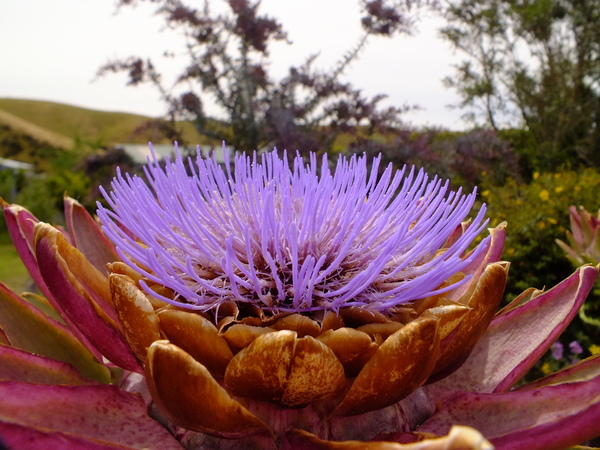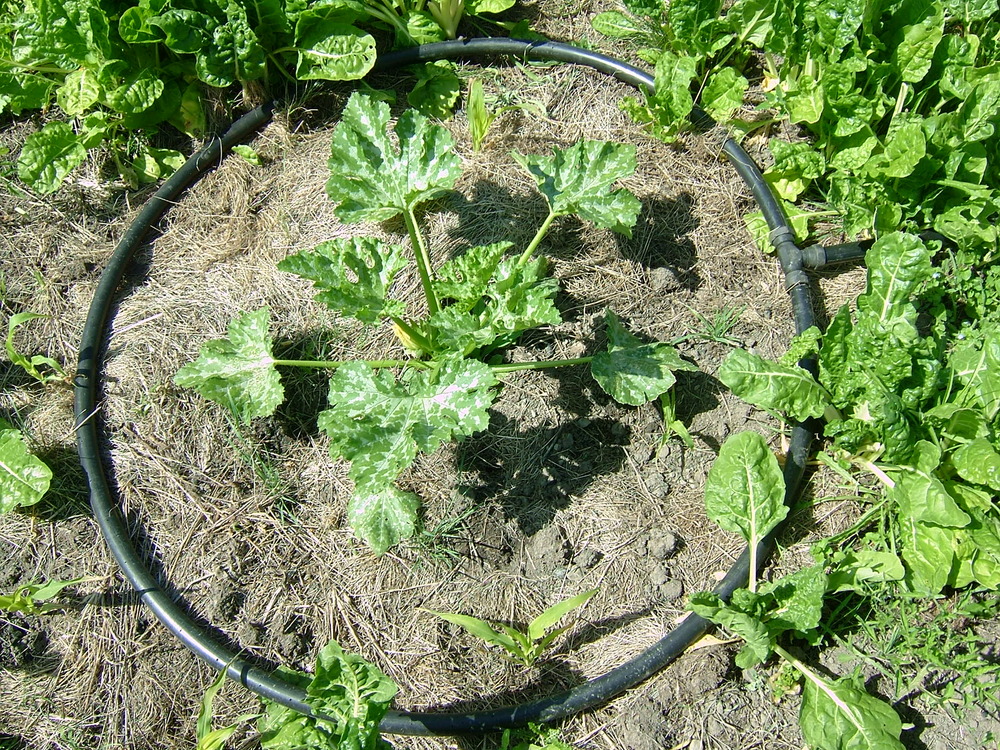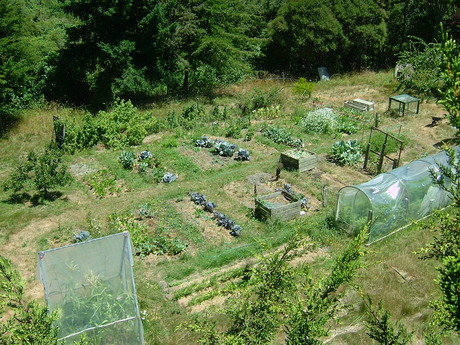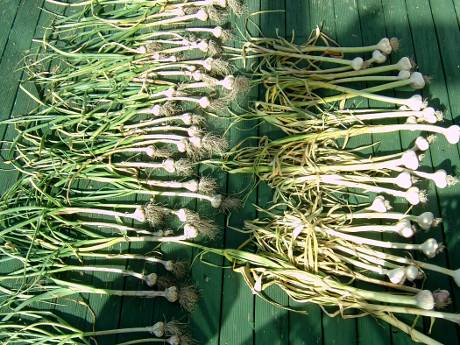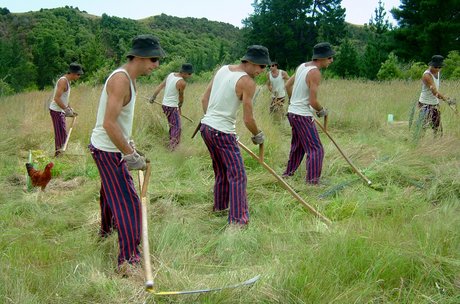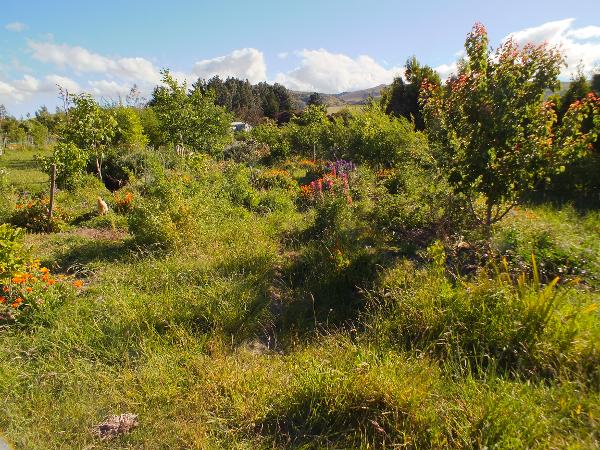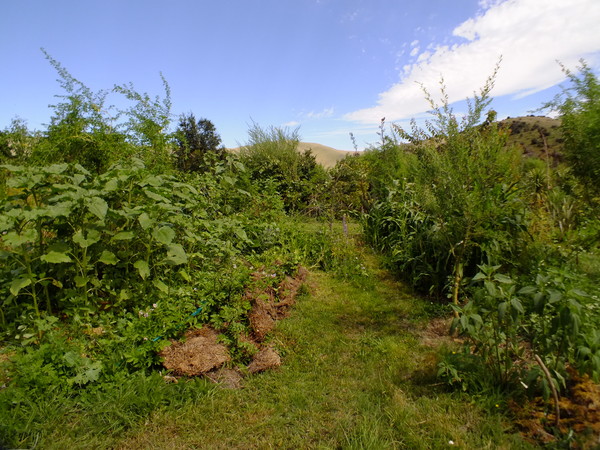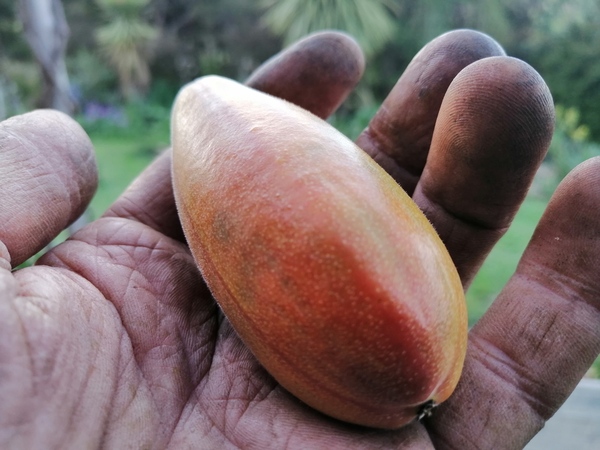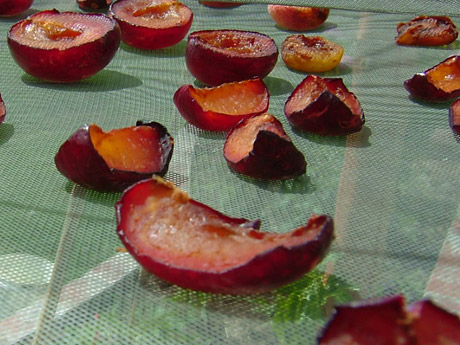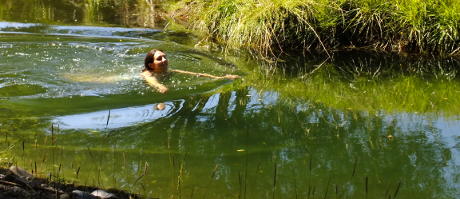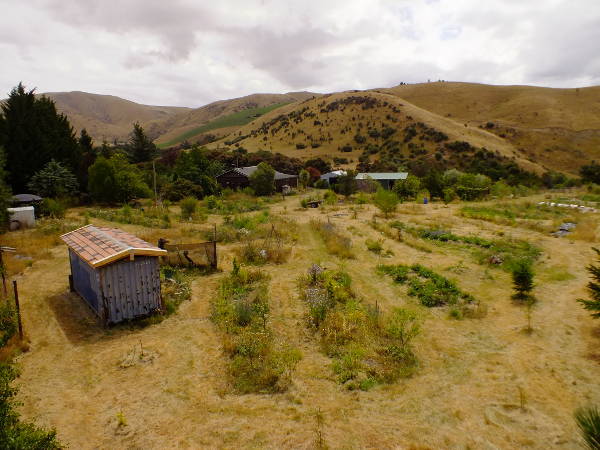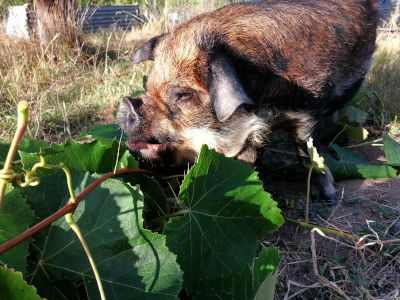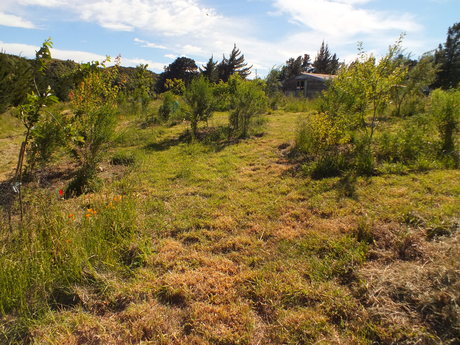Found 17 results tagged with 'Summer'
Click tags to include or exclude from results
Sprinkling (at high pressure)
We have a well with a pump that delivers 25mm of water at high pressure. While I was trying to come up with a way to apply this water gently to the garden I came up with this simple circular terminus mister (click for photo).
It effectively produces a 4 meter high column of mist. Wonderful on a scorching afternoon.
Garden update
A hint of garlic
This represents about 40-50% of the crop and is the first time we have grown garlic at our place.
Food forest video tour
Hugelkultur gardens in summer
Picking Banana Passion Fruit
Typically ready for harvest from summer to early autumn, depending on your region and local growing conditions.
How to Tell When Banana Passionfruit is Ripe
-
Colour Change - The fruit changes from green to a bright yellow or golden-orange hue (depending on the variety). The colour should be rich and uniform.
-
Softness - Gently squeeze the fruit; it should feel slightly soft but not squishy.
-
Separation from the Vine - Ripe fruit often falls from the vine on its own. If it’s still attached but shows the above signs, it may still be ready to harvest.
How to Harvest
-
Manual Picking - Use sharp pruning shears or scissors to cut the fruit from the vine, leaving a small stem attached to prevent damage. Handle the fruit gently to avoid bruising.
-
Collect Fallen Fruit - Check around the plant regularly for fallen fruit, as these are often at peak ripeness.
Tip: Avoid eating the skin as it is not palatable and may contain compounds that can be slightly toxic in large quantities.
Harvest Figs
Harvesting ripe purple figs in January in North Canterbury, New Zealand, is a delightful experience, as the height of summer offers warm days and plenty of sunshine, perfect for ripening figs to their full potential.
The figs on the tree are usually plump, slightly soft to the touch, and emit a faint sweet aroma when ripe. Their purple skin might show slight cracking, a good indicator of peak ripeness. Harvesting is best done early in the morning when the air is cool, and the fruit is at its freshest.
To pick them, gently twist the fig at its stem or use a pair of clean garden shears to snip it off, taking care not to damage the fruit or the branches. Wear gloves or long sleeves if the sap from the tree irritates your skin, as fig sap can be sticky and mildly irritating for some.
Once picked, the figs are ready to be enjoyed fresh, their juicy and sweet flesh making a perfect summer treat. Alternatively, they can be preserved in jams, dried, or baked into desserts. In North Canterbury’s warm climate, this is a rewarding seasonal activity for home gardeners or orchardists alike.
Summer plant propagation
- Mulberry (Morus spp.) – Softwood cuttings root well in early summer.
- Fig (Ficus carica) – Softwood cuttings with rooting hormone can establish quickly.
- Pomegranate (Punica granatum) – Best propagated from semi-hardwood cuttings in mid to late summer.
- Feijoa (Acca sellowiana) – Semi-hardwood cuttings taken in late summer root well.
- Gooseberries & Currants (Ribes spp.) – Red, black, and white currants propagate well from softwood cuttings in summer.
- Blueberry (Vaccinium spp.) – Softwood cuttings in early summer or semi-hardwood cuttings later in the season.
- Blackberry & Raspberry (Rubus spp.) – Tip layering and softwood cuttings work well.
- Grapevine (Vitis vinifera) – Softwood or semi-hardwood cuttings in summer with high humidity.
- Passionfruit (Passiflora edulis) – Best propagated from semi-hardwood cuttings with bottom heat.
- Rosemary (Salvia rosmarinus) – Softwood cuttings in early summer root easily.
- Lavender (Lavandula spp.) – Semi-hardwood cuttings in mid-summer.
- Oregano (Origanum vulgare) – Softwood cuttings grow well with high humidity.
- Thyme (Thymus spp.) – Softwood cuttings root well in warm conditions.
- Guava (Psidium guajava) – Semi-hardwood cuttings with rooting hormone.
- Sugarcane (Saccharum officinarum) – Stem cuttings (setts) can be planted directly.
- Lemon & Lime (Citrus spp.) – Semi-hardwood cuttings with misting and bottom heat.
- Take cuttings early in the morning when plants are most hydrated.
- Use rooting hormone to improve success rates.
- Keep cuttings in a humid environment (plastic cover or misting).
- Avoid direct sunlight; bright indirect light is best.
- Ensure the growing medium is moist but well-draining (e.g., sand and perlite mix).
Harvest Coes Golden Drop Plums
Drying Fruit
Use a simple wooden frame with fine mesh / gauze stretched over and then place the cut fruit and put the whole contraption out in the sun.
Multi function pruning
We combine the chore of summer pruning fruit trees with a treat for the pigs and have found they love to eat most stone and pip fruit leaves as well as grape and willow.
Summer 2021
Production has started
The food forest area looks completely different now with all the sweet broom (nitrogen fixing small shrubs) and the primary swale feeding nutrient rich water down to the fruit and nut trees.
